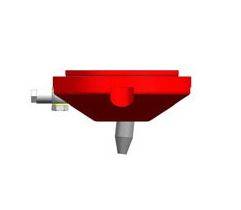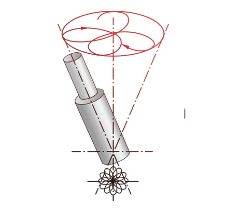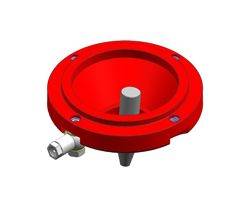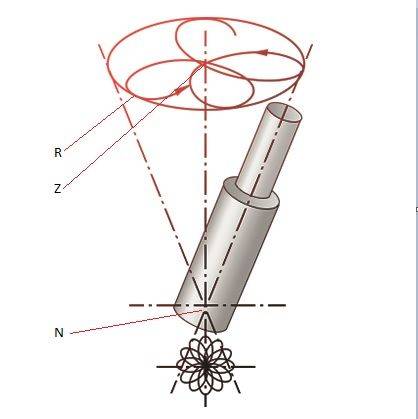
Radial riveting technology
Basically, the application determines the procedure.
In most cases, however, where high-quality joints are demanded or like critical applications, the radial riveting technology is the appropriate procedure as it is a delicate process, which requires little force to displace the necessary material. As a result, high quality is obtained.
Excellent surface structure of the closing head
With the radial riveting process, the tool itself does not rotate. The friction between tool and workpiece is thus at a minimum. The result is an excellent surface structure.
Low workpiece loading
Forming even of brittle parts like Bakelite or ceramic parts is possible. Lateral forces are negligible. Supporting the workpiece is simple, and clamping is usually unnecessary.
Tangential riveting
It is a process between radial and orbital riveting. The pattern is like the orbital process but with some benefits of the radial process. The path of the riveting peen does not lead through the center. This riveting is used in special cases.
Caption: Each rosette pattern R runs through the centre Z. The longitudinal axis of the riveting die still intersects the rivet at point N. The rivet is deformed in three directions. Radially outwards, radially inwards, and overlying also tangentially (circular).
Forming tools and profiles
RADIAL RIVETING
All BalTec radial riveting machines are fitted as standard with tool holder and pressure cup. The tool length (Ls) and the radius of the holder (Rp) result from your desired free height (H).
Legend radial riveting head:
1 = tool holder
2 = pressure cup
3 = riveting tool
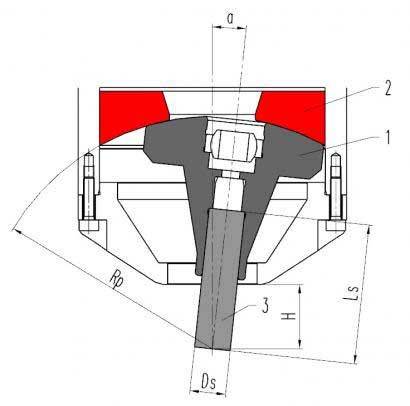
HIGH-QUALITY FORMING TOOLS - MANUFACTURED IN-HOUSE
Radial riveting Models RN/RNE 081, 151, 181, 231, ER/ET 03, 15
|
Radial riveting Models RN/RNE 281, 331, 381, 431, ER/ET 30, 50
|
Radial riveting Model RN/RNE 481
|
Eye-catching: The differences in speed show one of the advantages of the ELECTRIC over conventional devices.
Diversity at its best: a variety of radial riveting sequences.
Radial riveting vs. pressing
Contact us today
Do you need more information on the method of radial riveting? Or couldn't you find what you need? Let us know about it.
Contact us on one of our BalTec subsidiaries or send us an e-mail with your request. We are here for you - worldwide.


